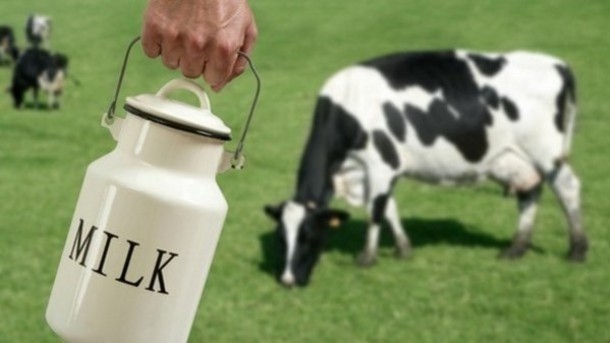Irish 50% post-quota milk production increase forecast 'wildly optimistic': USDEC

Speaking with DairyReporter.com, Ross Christieson, senior vice president of market research and analysis, USDEC, said the heavily-quoted Irish milk production target is an example of "how politicians can talk up numbers in good times."
European Union (EU) milk quotas, introduced as a temporary measure in 1984 to address the over production of milk, expired last month.
Milk production in post-quota Ireland is predicted to increase 50% by 2020 - a figure repeatedly used by Simon Coveney, the Irish Minister for Agriculture, Food and the Marine.
Data presented by USDEC in its report, European Union: The Impact of the Removal of Milk Quotas in 2015, does not support this prediction, said Christieson.
"Ireland will produce a lot more milk, but the 50% target is a little arbitrary," said Christieson. "Maybe it's a good motivator, but it has a little danger in it."
"To put a volume prediction out there without considering the volatility is quite a dangerous thing."
"Being hell bent on producing more milk sends the wrong signals," Christieson said. "They should be looking at profitability rather than volume."
Price volatility
The EU milk quota system expired on March 31 - the final day of the 2014/15 season.
Under the system, EU Member States were issued two national quotas - one for milk deliveries to processors and the other for direct sales at farm level. Member States that exceeded either quota were handed a fine called a superlevy of €27.83 (US$31.10) per 100kg.
USDEC expects Ireland to be among the "six winning countries" of the quota abolition, alongside Germany, France, Poland, Denmark and the Netherlands.
The 50% Irish production increase forecast is, however, "wildly optimistic," Christieson said in an April 9 USDEC blog post.
Faced with continuing milk price volatility, Irish production will increase by 30% (4.6% annually) at most by 2020, USDEC believes.
In a statement sent to DairyReporter.com, the Irish Ministry of Agriculture, Food and the Marine said the "full range of industry stakeholders" behind the 50% target are fully aware of the challenges.
"Managing expansion against the background of price volatility is a significant challenge, of course, of which the major players are acutely aware when the targets were agreed," it said. "The development of tools which can mitigate its worst effects is a key focus for the strategic development of the sector."
"Ultimately, of course, expansion is a matter for commercial operators, and the significant investment by major players in processing facilities, in research and innovation capability and the positivity of farmers are powerful indicators of confidence in the future of a sector which can operate competitively on global markets," the Ministry of Agriculture, Food and the Marine statement continued.
Target "achievable"
Ornua, the Irish dairy cooperative formerly known as the Irish Dairy Board, considers the target "achievable."
Output is already 15% over the Food Harvest 2020 (a Ministry of Agriculture, Food and the Marine roadmap) reference base and is likely to grow around 10% in 2015, Jeanne Kelly, head of corporate communications, Ornua. told DairyReporter.com.
Farmer output intention surveys suggest growth of around 5% each year between 2016 and 2020 is planned, she said.
"It is achievable," said Kelly. "We're confident we'll reach that 50% mark."
"It's unfortunate we've been affected by lower prices that affect output, but we're confident that in the medium to long term demand for dairy will grow."
While disputing the accuracy of the 50% forecast, Christieson wished Ireland luck in its efforts.
He sought to remind the industry, however, that if Ireland does hit its 50% target "it will still be a relatively small milk producer."
“Let’s look at the bigger picture,” said Christieson. “Even if they do increase production by 50%, they’ll only be a third the size of the New Zealand industry.”
“Don’t expect to have another New Zealand coming out of Ireland.”








